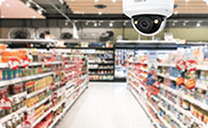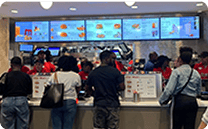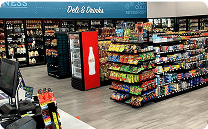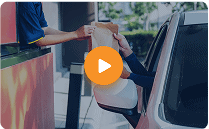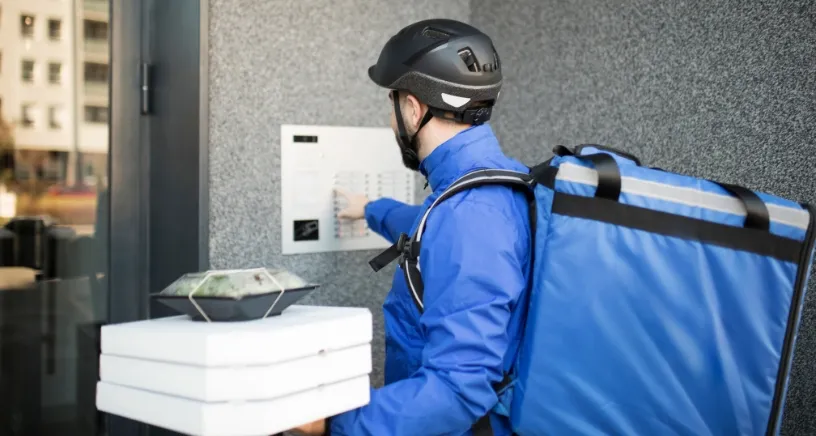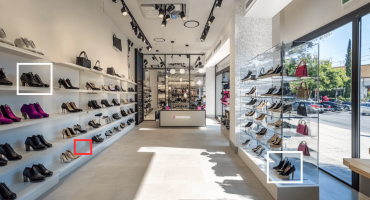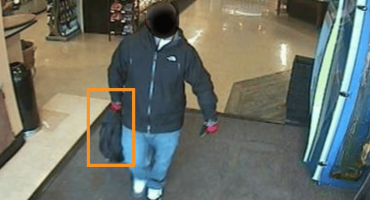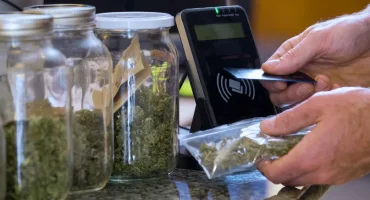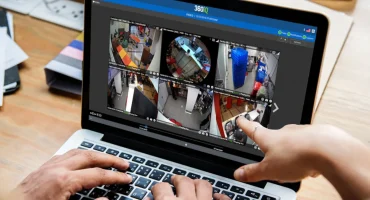In This article
Food delivery businesses like Uber Eats, DoorDash, and GrubHub experienced a major boom throughout the last few years. DoorDash had one of the largest stock market IPOs of 2020, and global installs of third-party food delivery apps grew by 25 percent that same year — but this boom means that food delivery fraud has also boomed.
With over 60 percent of young adults eating takeout and using food delivery apps regularly, delivery is not only a lucrative stream for businesses but also a necessity for restaurants to stay competitive.
Restaurant owners must remain aware of the potential impact of rising food delivery fraud. Here’s everything you need to know to stay on top of this at your business.
What Is Food Delivery Fraud?
Food delivery fraud occurs when a scammer targets a restaurant to engage them in a delivery or takeout sale with the intention of avoiding payment. While their behavior may save them a few bucks in the short term, many are simply seeking free food.
Why Is Food Delivery Fraud on the Rise?
Fraud with food delivery is rising because of the popularity of food delivery applications. Whenever one type of business experiences exponential increases, scammers will try to find a way to exploit it.
Yep, even if it’s just for a free meal.
Additionally, some restaurants aim to make their checkout processes speedier. To accomplish this, they drop security and fraud prevention features like two-factor authentication that would quickly detect and shut down fraudulent activity.
Less friction during checkout might mean more paying customers, but it increases opportunities for bad actors, especially those engaging in card testing fraud.
There are also other external factors that can impact this. Inflation has led to a higher cost of living and increased prices on necessities such as groceries, fuel, and utilities. These tough economic times can lead to people looking for other ways to offset costs, which is a big threat to the food delivery industry.
What Are the Types of Food Delivery Fraud?
Not all food delivery fraud is the same. Sometimes the behavior is malicious. Other times, it may be “friendly fraud” or the result of an honest mistake. Either way, restaurant owners must understand all the types of fraud they may encounter and the many ways they can lose money when customers use delivery apps or online ordering.
Credit Card Fraud
Restaurants have seen incidents of credit card fraud grow significantly in the last few years. In some cases, scammers outright steal someone else’s credit card information and use it to place a food order on a delivery app. A successful transaction could lead to a second type of fraud — card testing.
The food delivery industry can be an easy target for card testing. That’s because scammers are looking for a small price tag to test a customer’s card to see if money is available. Fraudsters take an authorized transaction as an indication that the credit card number is valid and the card can be used elsewhere.
In instances of credit card fraud, restaurants often lose money when the cardholder disputes the charges with their card issuer or bank. The financial institution may issue a refund because it was a card-not-present (CNP) transaction, and as such, the cardholder isn’t responsible for paying the cost.
Account Takeover Fraud
Account takeover fraud happens when a scammer gains access to a customer’s login credentials. That scammer then perpetrates fraud with food delivery by using that account to make unauthorized food orders. This is typically done in one of two ways.
First, bad actors might send a phishing email or contact someone via social media, impersonating a third-party delivery app. They often make the customer believe that their account has been compromised and that they need to verify their login details for recovery purposes.
The communication looks real and therefore doesn’t raise many red flags, so customers voluntarily share their account information.
In other instances, the scammer hacks into an account and uses the customer’s debit or credit card to order food. The customer may receive notifications about an order they never placed. Unfortunately, the fraudster often also gains access to other sensitive information, such as the person’s address and phone number.
Friendly Fraud
Not all fraud is carried out by bad actors. While some might take issue with identifying fraud as a positive thing, “friendly fraud” (also referred to as chargeback fraud) is also common. It happens when someone places an order for food delivery with their account and then initiates a chargeback (fraud claim) with their credit card company or bank.
In some cases, the claim is legitimate for a few reasons. This includes poor service, getting the wrong order, or receiving a subpar meal. Other times, they simply don’t want to pay for their food. Either way, friendly fraud hurts your bottom line and jeopardizes your ability to use third-party apps.
Third-Party Chargebacks
Restaurant owners who engage in third-party delivery need to know the difference between a customer initiating a chargeback with their credit card company and asking for a refund from their third-party delivery app. The latter can result in you paying out more than just the cost of the meal.
Requesting fraudulent refunds from a third-party delivery app is one of the biggest type of fraud. All the user has to do is complain about their order, say an item is missing, or even lie and say they never got the order. The delivery app will often just issue a refund without a detailed investigation. This often leaves the restaurant helpless and results in losing revenue.
Cash-on-Delivery Fraud
Typically, third-party food delivery services require delivery payment as soon as the customer places the order.
However, in an effort to limit fraud and chargebacks, popular food delivery apps have begun experimenting with cash-on-delivery orders that require delivery drivers to collect payment in cash at the customer’s door. Unfortunately, this model isn’t without issues.
Cash-on-delivery fraud can also occur in two ways.
First, fraudulent drivers looking for a free meal and a little cash may eat the customer’s meal or swap it with something else and still take the customer’s money. This typically only works the first time it’s attempted. The fraudulent driver will likely be booted from the delivery app after a customer reports them.
The other type of cash-on-delivery scam involves customers who take the food but don’t give the delivery driver the correct amount of cash in exchange or hand off counterfeit money. Unfortunately, the driver may not realize what has happened until it’s too late. This results in the customer getting away with the scam.
How Can Restaurants Prevent Food Delivery Fraud?
Preventing restaurant fraud is no easy task. Scammers are both intelligent and highly adaptable. It begs the question: what must delivery companies do to stop them?
The answer can be tricky. On the one hand, you know that even friendly fraud can negatively impact your business. At the same time, you don’t want to implement too many security measures and frustrate your loyal customers.
Read on to find out what measures you can take to ensure that your restaurant doesn’t fall prey to common scams while maintaining a good relationship with your customer base.
Partner with Reputable Delivery Platforms
Work with well-established and reputable third-party food delivery apps that have robust security measures in place. Research and choose platforms that prioritize security and have a track record of actively combating fraud.
Implement Order Verification Processes
Establish internal procedures to verify the authenticity of orders received through the third-party app. This can include cross-referencing the order details with the information provided by the app and contacting customers directly to confirm their orders.
Monitor Transaction Activity
Regularly review and monitor transaction activity on the third-party delivery platform. Look for any irregularities. This includes sudden increase in orders from a specific customer or a high number of chargebacks associated with orders through the app.
Implement Fraud Detection Tools
Utilize fraud detection tools and services that can analyze transaction data and identify potential fraud. These tools can help detect patterns, anomalies, and other indicators of fraudulent activity. Use video to pair the transaction with the order and show the third-party delivery service that they have proof they provided the meal that was requested.
Strengthen customer authentication
Encourage the use of secure authentication methods on the delivery app. This can include two-factor authentication. This is where customers need to provide a verification code or use two-factor authentication before placing an order. This should especially be done with orders that have a high value.
How Is Delivery Fraud Reported?
Third-party app drivers must report fraudsters who don’t pay for their cash on delivery orders directly to the company that owns the app. If you’re a business owner who hires delivery drivers directly, you’ll have them report it straight to you. You may consider blocking the scamming customer.
Affected customers have a few ways to report a food delivery scam.
Typically, a customer trying to commit delivery fraud will report an issue with the food directly through the third-party app.
Customers who are a victim of a food delivery fraud scam where their credit card is stolen can report it directly to the third-party app. They should also reach out to their financial institution for a chargeback and a new credit card. They may be able to file a police report if a scammer hacks their account and uses their card, but this may not be an effective means of immediate recovery.
What Are the Consequences of Food Fraud?
Scammers often can’t be traced to dole out any real punishment,. However, restaurant owners face very serious consequences for food fraud. These include:
Risk of merchant account fines, fees, limits, and even termination for too many chargebacks
A damaged reputation among the local community, along with the potential loss of customers
Having to implement stringent security measures, which may cause friction with honest customers
It’s vital to understand that restaurant fraud isn’t harmless. It’s worth doing whatever you can to combat it. This is especially true when it’s easy for you to face consequences.
Who Pays? Delivery Service or Restaurant?
Believe it or not, chargebacks and refunds cost you considerably as a business owner. As the merchant, you’ll incur all expenses to rectify a fraudulent incident, including additional processing fees.
When a customer initiates a chargeback, the transaction fees and operational costs of delivering the meal are essentially wasted. If the customer asks for a refund in the third-party app and “wins” their case, the app may charge you a fee to cover the reimbursement. Not only are you losing out on the money for the meal, but you’re now in the negative since you must pay the third-party app.
Restaurant Solutions with DTiQ
As a restaurant owner, you should be spending your resources on acquiring new customers and providing a stellar experience for them. Fraud robs you of that opportunity, negatively impacting your bottom line and jeopardizing your restaurant. To prevent it, restaurants must take action.
By offering advanced analytics, video solutions, and robust business intelligence, DTiQ can help you. Create a loss prevention strategy to catch suspicious activity and fight back against even the friendliest fraud as a team.
Book a demo today and let us help you build a custom solution to protect your business and keep you moving forward.


